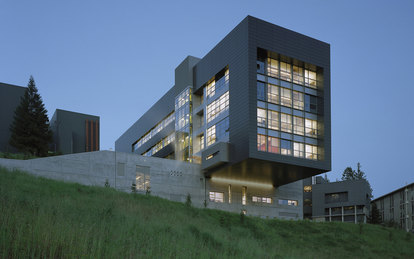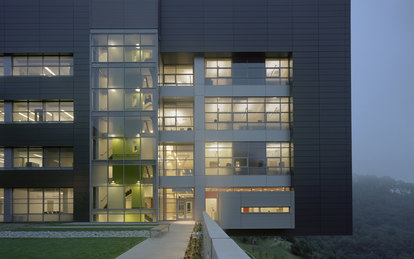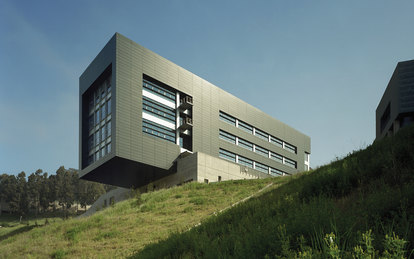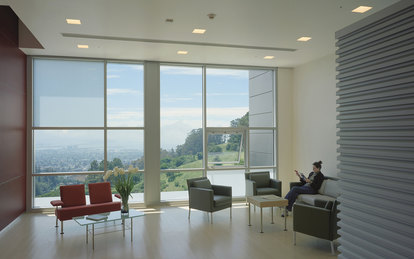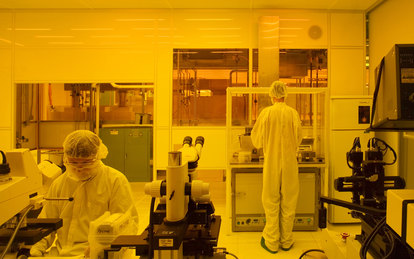U.S. Department of Energy, Lawrence Berkeley National Laboratory - The Molecular Foundry
The Lawrence Berkeley National Laboratory’s Molecular Foundry was a pioneering institution from its inception, dedicated to the nascent field of nanotechnology. It required a facility that could meet its specialized needs in a broad range of sciences and attract the world’s top researchers.
Client
"U.S. Department of Energy
Location
Berkeley, California
Markets/Services
Architecture, Federal, Government Research, Interiors, Programming, Research, Science & Technology, Sustainable Design
Size
96,500 SF
Featured Awards
LEED Gold
The emergence of modern nanotechnology in the late 20th century held the promise of advances and applications across a broad spectrum of sciences. It prompted the U.S. Department of Energy to establish user facilities that would bring those diverse fields together, where researchers in organic chemistry, inorganic chemistry, biology, physics and computational theory could share specialized equipment to explore the linkages possible when working at the same nanoscale. The Molecular Foundry is one of the first of these types of facilities in the world, a collaborative, multidisciplinary building focused on nanoscience integration.

The conceptual design is vertically oriented with each level serving different needs for highly specialized laboratories.
Programming informed conceptual design for the building, resulting in a vertically oriented structure with six levels. Each level provides highly specialized laboratories serving the sophisticated needs of each different research concentration, such as high clean space requirements or chemical vapor deposition.
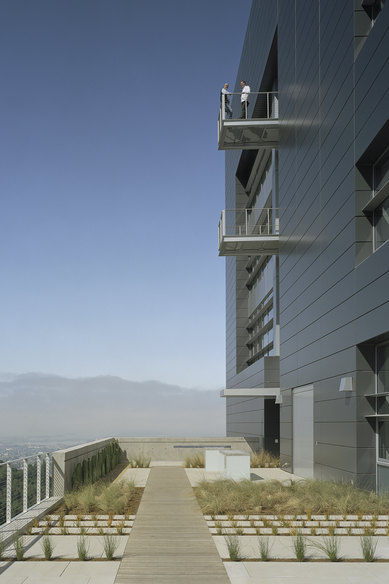
With a design that sits on top a steep hillside, outdoor spaces give researchers respite with dramatic views of the surrounding area.
The Molecular Foundry’s bold modernist design responds to its steep hillside site. A 50-foot cantilever reaches out over the slope, housing offices with dramatic views of Berkeley and San Francisco Bay. Clad in aluminum, concrete and glass, it creates a simple yet striking form, a highly functional building that has fostered many breakthroughs in its first decade and has proven capable of achieving many more.
The Foundry is far and away the most popular building on campus, and is bringing researchers together to interact exactly as we intended.
Jim Krupnick
Director, Office of Institutional Assurance
The Molecular Foundry is also a pioneer in sustainability. By analyzing performance of equipment in other Lawrence Berkeley Laboratory facilities, the team was able to right-size its equipment beyond traditional specifications, significantly reducing energy consumption and saving front end costs by over $2 million. The size of the electrical system was reduced by 38% and the HVAC system was reduced by approximately 33%. Air handlers were reduced from a total of 180,000 cubic feet per minute (cfm) to a total of 120,000 cfm. Along with other measures such as clean construction, helped the facility earn LEED Gold certification just a few years after the program was established.
